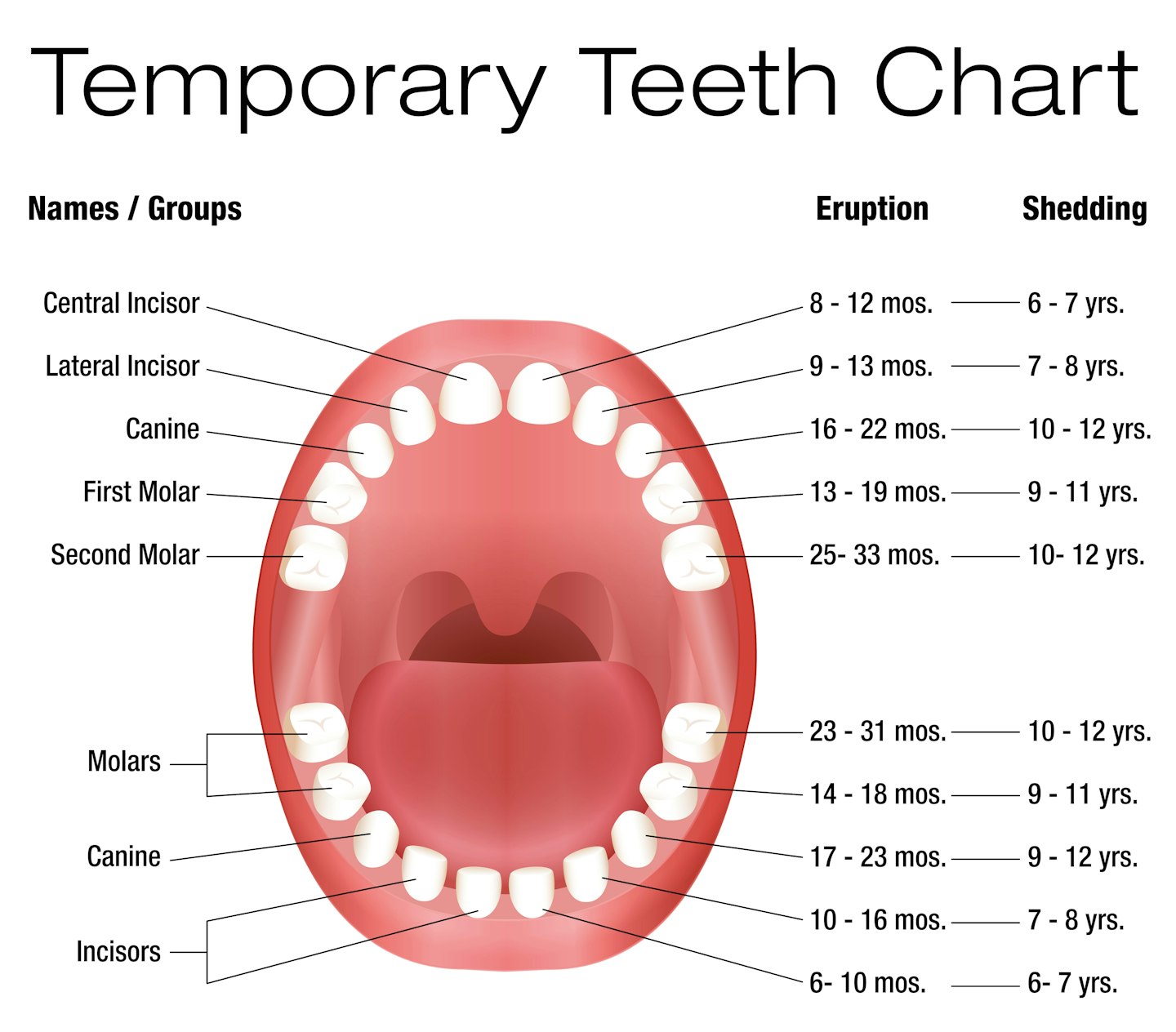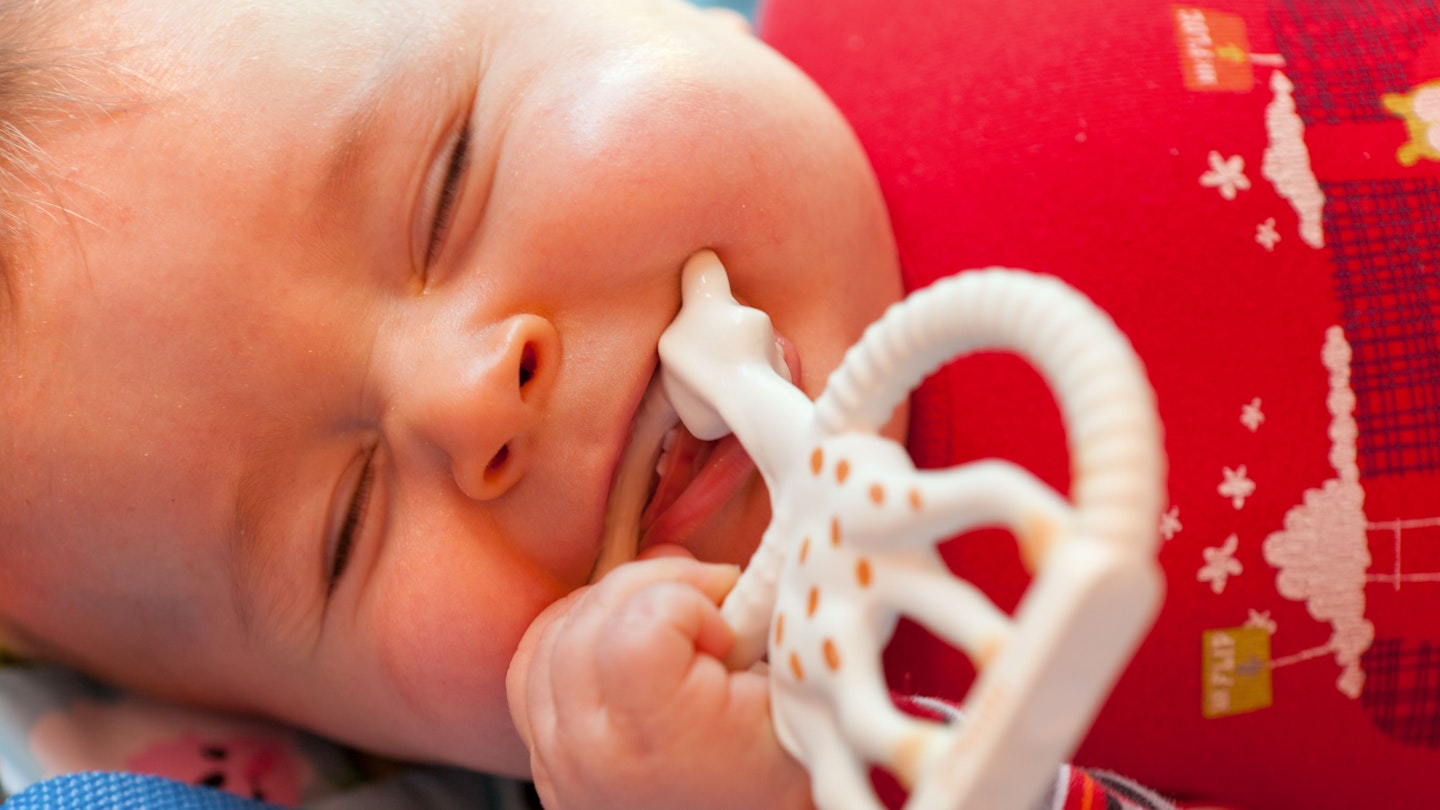Baby teeth and their order of appearance
Teething is something everybody gets nervous about and all parents wonder about what order baby teeth come in, and when it’s going to happen. Parents with early teethers complain that they’re losing sleep again, while parents of late teethers fret that their baby is behind the others. Obviously, as with everything baby-replated, no two children are the same, but baby teeth, or milk teeth, do usually come in roughly the same order, at roughly the same point in time and this is worth bearing in mind.
There are many myths about teething – whether it really causes fever, and vomiting, for instance - and there are an enormous number of ‘remedies’ you can get to help your children through this tough time, from herbal powders and chew toys to gels and tinctures, or even giraffes to chew.

Of course, the reality is that teething is easy for some children and others have a really tough time. For the most part, the first few teeth will be the worst in terms of night-time crying – for some reason babies seem to feel their teeth coming in more at night when there are no distractions - but that’s what Calpol is there for, right? A little Calpol in milk before bedtime never did anyone any harm!
So getting all your baby teeth in place is a long process. Most children have a full set of teeth before they turn three, and have learned all about how to brush their teeth properly to take care of them. Which is crazy really, because milk teeth start falling out not THAT long afterwards - usually around the age of six – so this full set only has a lifespan of around three years. Well, we’d better make them good years – our babies went through a lot to get this collection of little pearly whites!

The order in which baby teeth appear is as follows
The first baby teeth to come in are the lower then the upper central incisors
Lower central incisors
The middle teeth at the bottom of the mouth are usually the first baby teeth to arrive, most commonly between five and ten months; these first teeth usually come in pairs (don’t children look weird with just one, freak tooth?)
Upper central incisors
In perfect symmetry, the upper middle teeth are next and these ones typically come in between six months and a year of age.
The second set of baby teeth to come in are the lateral incisors
Upper and lower lateral incisors
Next to come in are the top teeth next to the central incisors, making more of a row at the top and the bottom. These pearly whites come in between nine and thirteen months, and the lower teeth follow, often between 10 and 16 months.
The third set of baby teeth to come in are the first molars and the canines
Upper and lower first molars
The teeth towards the back of the mouth – the upper first molars and the lower first molars – commonly arrive at the same time, between one and one-and-a-half years old.
Upper and lower canines:
The upper and lower canines usually arrive together between 16 and 22 months – and these can be tricky teeth to come through. They tend to take a long time and can be more painful than the other teeth your child has been used to so watch out for these ones!
The last set of baby teeth to come in are the second molars
Upper and lower second molars: These usually begin on the bottom starting between 20 and 31 months, with the upper second molars coming later, probably after your child is two.
Every child has a separate teething process, but remember it does get easier as you go on – and don’t worry if your child has less teeth than their friends: they will catch up in the end and all these little teeth are only destined for the tooth fairy anyway.
